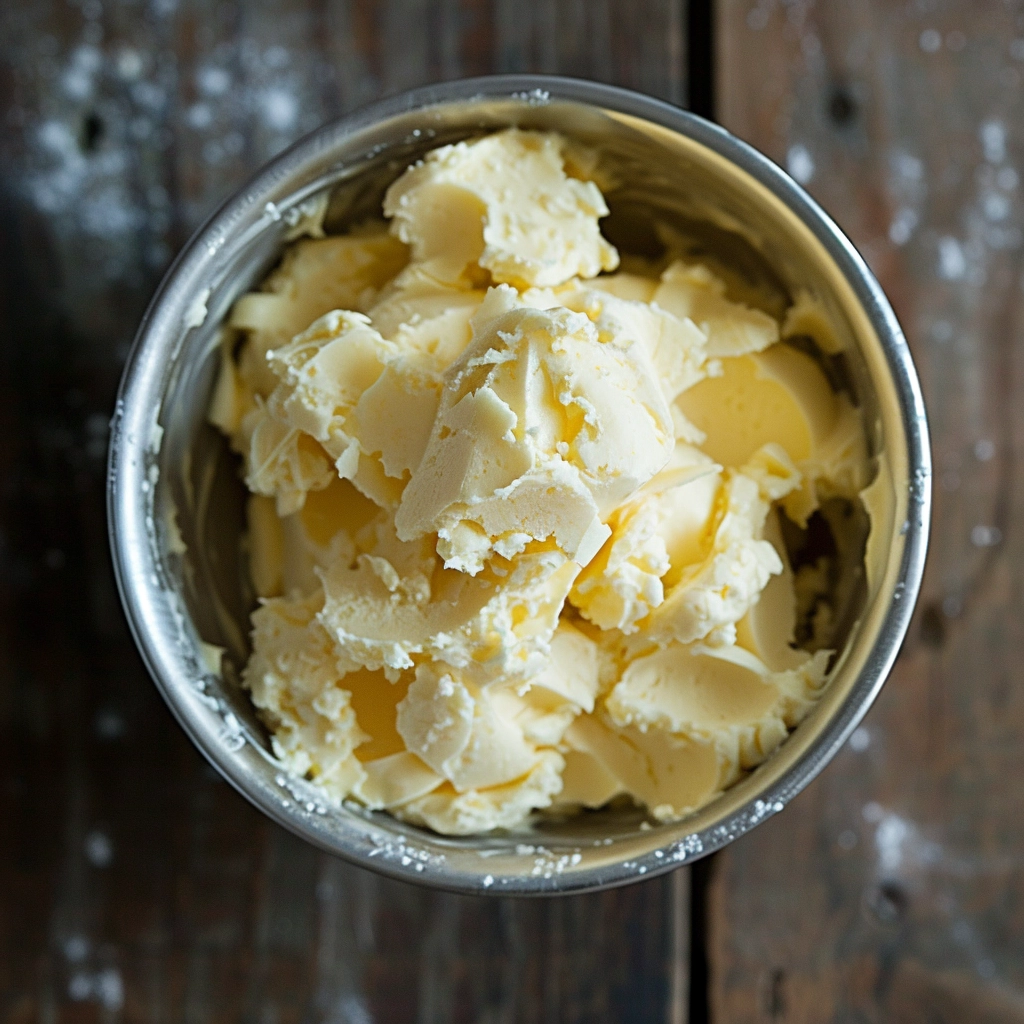Creaming butter and sugar is a fundamental technique in baking that serves as the foundation for countless delicious recipes, from light and fluffy cakes to chewy cookies and beyond. While it may seem simple, achieving the perfect creamed mixture requires attention to detail and a bit of finesse. In this guide, we’ll break down the process step-by-step, empowering you to elevate your baking game and create irresistible treats with ease.
Ingredients:
- Unsalted butter, at room temperature
- Granulated sugar
Equipment:
- Stand mixer or hand mixer
- Mixing bowl
Instructions:
- Prepare the Butter: Start by ensuring your butter is at the proper temperature. It should be soft enough to yield to gentle pressure but not so warm that it becomes greasy. Allow the butter to come to room temperature by leaving it out on the counter for about 30 minutes to an hour before beginning.
- Measure the Ingredients: Using a kitchen scale or measuring cups, accurately measure the desired amount of butter and sugar according to your recipe. It’s essential to use the correct ratios to achieve the desired texture and structure in your baked goods.
- Beat the Butter: Place the softened butter in the mixing bowl of a stand mixer fitted with the paddle attachment or use a hand mixer. Begin beating the butter on medium speed for about 1-2 minutes until it becomes smooth and creamy. This initial step helps to aerate the butter, creating a light and fluffy base for your recipe.
- Add the Sugar: With the mixer still running, gradually add the granulated sugar to the creamed butter. It’s best to add the sugar in small increments, rather than all at once, to ensure even incorporation and a smooth consistency. Scrape down the sides of the bowl with a rubber spatula as needed to ensure all the ingredients are thoroughly combined.
- Cream Together: Once all the sugar has been added, continue beating the mixture on medium-high speed for an additional 3-5 minutes, or until the mixture becomes pale in color and noticeably increases in volume. This process incorporates air into the mixture, resulting in a light and airy texture in your baked goods.
- Test for Readiness: To ensure the butter and sugar are adequately creamed, stop the mixer and scrape down the sides of the bowl. Then, rub a small amount of the mixture between your fingers. It should feel smooth and slightly gritty from the sugar but not gritty from undissolved sugar granules. If needed, continue mixing for another minute or two until the desired consistency is reached.
- Use as Directed: Once properly creamed, the butter and sugar mixture is ready to be incorporated into your recipe according to the instructions provided. Whether you’re making cookies, cakes, or any other baked treats, the creamed mixture serves as the base for building flavor, texture, and structure in your final product.
Tips for Success:
- Start with softened butter to ensure easy mixing and proper aeration.
- Use granulated sugar for classic creaming, as it provides the necessary texture and structure.
- Avoid overmixing, as this can lead to a dense or tough texture in your baked goods.
- Experiment with different mixing speeds and durations to achieve the desired consistency for your recipe.
Conclusion: Mastering the art of creaming butter and sugar is a fundamental skill that every baker should have in their repertoire. By following these simple steps and tips, you’ll be well on your way to creating light, fluffy, and delicious baked treats that are sure to impress. So, roll up your sleeves, grab your mixer, and get ready to elevate your baking game with perfectly creamed butter and sugar!
